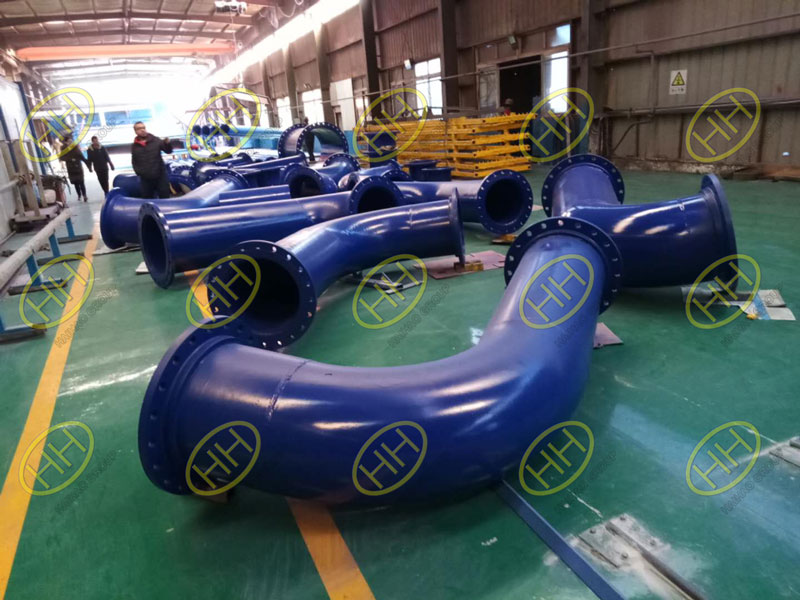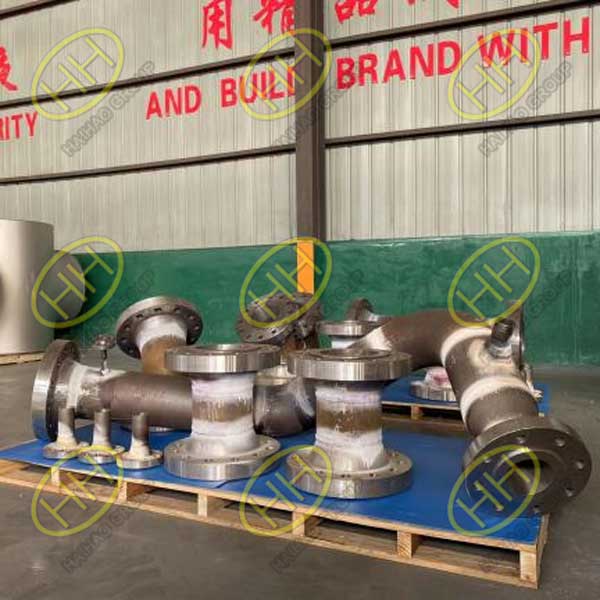Design pressure and design temperature in chemical pipelines
In the realm of chemical pipeline engineering, understanding and accurately determining the design pressure and design temperature are paramount. These parameters ensure the safety, durability, and operational efficiency of pipelines and their components under various conditions. Below, we delve into the specifics of how these critical values are determined and applied.

FBE Coating Pipings
Design Pressure
Design pressure is the pressure that a pipeline must withstand under the most severe conditions of pressure and temperature during operation. The following outlines the key considerations and requirements for determining design pressure:
Connection to Equipment or Pressure Vessels:
Pipelines connected to equipment or pressure vessels must have a design pressure not lower than that of the equipment or vessel. Additionally, they must meet specific criteria:
For pipelines with a safety relief device, the design pressure should be at least the sum of the safety relief pressure and the static pressure from the liquid column.
For pipelines without a safety relief device, the design pressure should not be less than the maximum pressure the pressure source can reach plus the static liquid column pressure.
Centrifugal Pump Outlet Pipelines:
The design pressure for pipelines at the outlet of centrifugal pumps should be the greater of the following:
The normal suction pressure plus 1.2 times the rated differential pressure of the pump.
The maximum suction pressure plus the differential pressure of the pump.
Vacuum Pipelines:
For vacuum pipelines, the design pressure is set at 0.098 MPa.

prefabricated products
Design Temperature
Design temperature is the temperature that a pipeline and its components must withstand under the most severe conditions of pressure and temperature during operation. The determination of design temperature varies depending on the type of pipeline:
Non-Insulated Pipelines:
For SHA-grade pipeline components, the design temperature is typically the medium temperature. If another temperature is used, it must be verified by calculation and experiment.
For other grades:
If the medium temperature is below 65°C, the design temperature is the same as the medium temperature.
If the medium temperature is 65°C or higher, the design temperature is determined as follows:
For pipes, butt-weld fittings, socket-weld or butt-weld valves, and other components with similar wall thickness, the design temperature should be at least 95% of the medium temperature.
For flanges, gaskets, and flanged valves, the design temperature should be at least 90% of the medium temperature.
For bolts, nuts, and other fasteners, the design temperature should be at least 80% of the medium temperature.
Pipelines with External Insulation:
The design temperature should consider the highest or lowest operational temperature of the medium, depending on the temperature conditions and their impact on the pipeline material.
Pipelines with Internal Insulation:
The base material’s design temperature should be determined through thermal calculation or actual measurement.
Jacketed or Heat-Traced Pipelines:
If the process medium temperature is higher than the heat-tracing medium, the process medium temperature is used as the design temperature.
If the process medium temperature is lower, the design temperature is the higher value between the heat-tracing medium temperature minus 10°C and the process medium temperature.
Safety Relief Pipelines:
The design temperature should be the highest or lowest temperature that might occur during the discharge process.
Pipelines Requiring Purging:
The design temperature should be determined based on specific conditions.
By adhering to these principles, engineers can ensure that chemical pipelines are designed to withstand the pressures and temperatures they will encounter, maintaining safety and operational integrity throughout their use.
